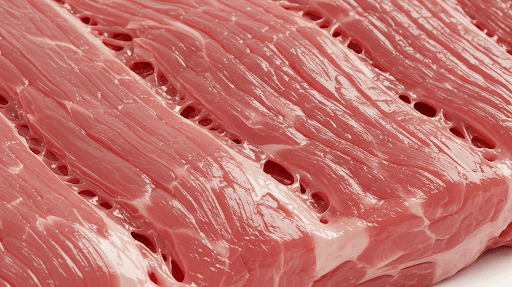Edible Scaffolds for Cultured Meat: Innovation by Nexture Bio
ALTERNATIVE PROTEINSSUSTAINABILITY


This is an AI generated illustration and does not represent actual product or service.
Introduction
As global meat demand continues to soar, the environmental toll of traditional livestock farming becomes harder to ignore. Cultured meat—grown from animal cells without slaughter—is emerging as a sustainable solution. But one of the toughest technical challenges in this space has been building a structure that supports cell growth while being safe to eat. Most current scaffolds used to grow cells aren’t edible, meaning they must be removed before consumption, making the process costly and inefficient.
A recent patent (EP4554396A1) filed by Nexture Bio addresses this challenge head-on. It introduces edible scaffolds made from plant-based proteins and polysaccharides that not only support cell growth but also become part of the final meat product. This approach promises a cleaner, more scalable solution for the cultured meat industry.
Why Current Scaffolds Fall Short
Traditional methods of growing cultured meat face multiple hurdles:
Flat, 2D Growth: Cells grown in dishes lack the three-dimensional complexity of real meat, leading to poor texture.
Non-Edible Scaffolds: Materials like polystyrene or synthetic polymers must be removed after growth, adding steps and costs.
Animal-Derived Materials: Many scaffolds use collagen or gelatin, which go against the goal of animal-free meat.
Low Scalability: Thick, structured meat products are hard to replicate with current technology.
The Innovation: Edible Plant-Based Scaffolds
Nexture Bio's patent application describes a new class of scaffolds made entirely from food-safe, plant-based materials. The main components include:
Polysaccharides, like alginate, to form a soft yet supportive hydrogel.
Plant proteins, such as pea, soy, or oat protein, that help cells attach and grow, mimicking the natural structure of meat tissue.
These materials are all GRAS-certified (Generally Recognized As Safe), ensuring they're suitable for human consumption.
Key Highlights of the Technology
1. Multiple Scaffold Forms for Meat-Like Texture
The scaffolds can be manufactured in various formats, depending on the product:
Microcarriers (tiny beads 100–500 microns in size), ideal for minced or ground meat textures.
Continuous fiber networks, which can be aligned or randomly arranged to mimic muscle fibers in steaks or fillets.
2. Flexible Fabrication Methods
To build these structures, techniques like electrospraying and electrospinning are used to create uniform fibers or beads. Alternatively, extrusion can generate larger, fibrous structures more suited for solid meat alternatives.
3. Enhanced Cell Attachment with Edible Coatings
The scaffolds can be coated with tannic acid or polydopamine—both food-safe compounds that improve how cells attach and grow. In fact, iron citrate, another GRAS ingredient, replaces less desirable components like iron chloride to maintain edibility.
How the Scaffolds Perform in Practice
Lab testing showed that the scaffolds support robust cell growth. Fluorescence microscopy confirmed that cells attached well and proliferated on tannic acid-coated scaffolds. Even when the scaffolds were dried and later rehydrated, they maintained their shape and structure—an essential feature for manufacturing and storage.
Scalability was also demonstrated. Both electrospraying and extrusion methods allowed the scaffolds to be produced in bulk, moving this innovation closer to commercial reality.
Why This Innovation Matters
This edible scaffold technology offers several advantages over existing solutions:
✅ Fully Edible: No need to remove scaffolds—everything is safe to consume.
✅ Animal-Free: Completely plant-based, supporting ethical and sustainable meat production.
✅ Texture Control: Adjustable size and shape help recreate the mouthfeel of traditional meat.
✅ Scalable and Cost-Efficient: Uses inexpensive, food-grade materials like alginate.
✅ Customizable Nutrition: Scaffolds can be fortified with vitamins or flavor enhancers to boost health and taste.
Where This Can Be Used
The potential applications are wide-ranging:
Cultivated Steaks or Burgers: The scaffold becomes part of the final product, streamlining manufacturing.
Personalized Nutrition: Add nutrients or supplements based on individual health needs.
Space Missions: A stable, sustainable protein source for long-duration travel.
Conclusion
With this innovation, Nexture Bio may have cracked one of the key bottlenecks in cultured meat development: how to grow structured, meat-like products with components that don’t need to be removed. Their plant-based, edible scaffolds offer a smart, scalable, and sustainable pathway to make lab-grown meat a commercial reality.
Looking Ahead: Future work could explore blending these scaffolds with fat-replacement systems or embedding flavor compounds to improve overall sensory experience. As cultured meat continues to grow, innovations like this will shape its future—one edible fiber at a time.




